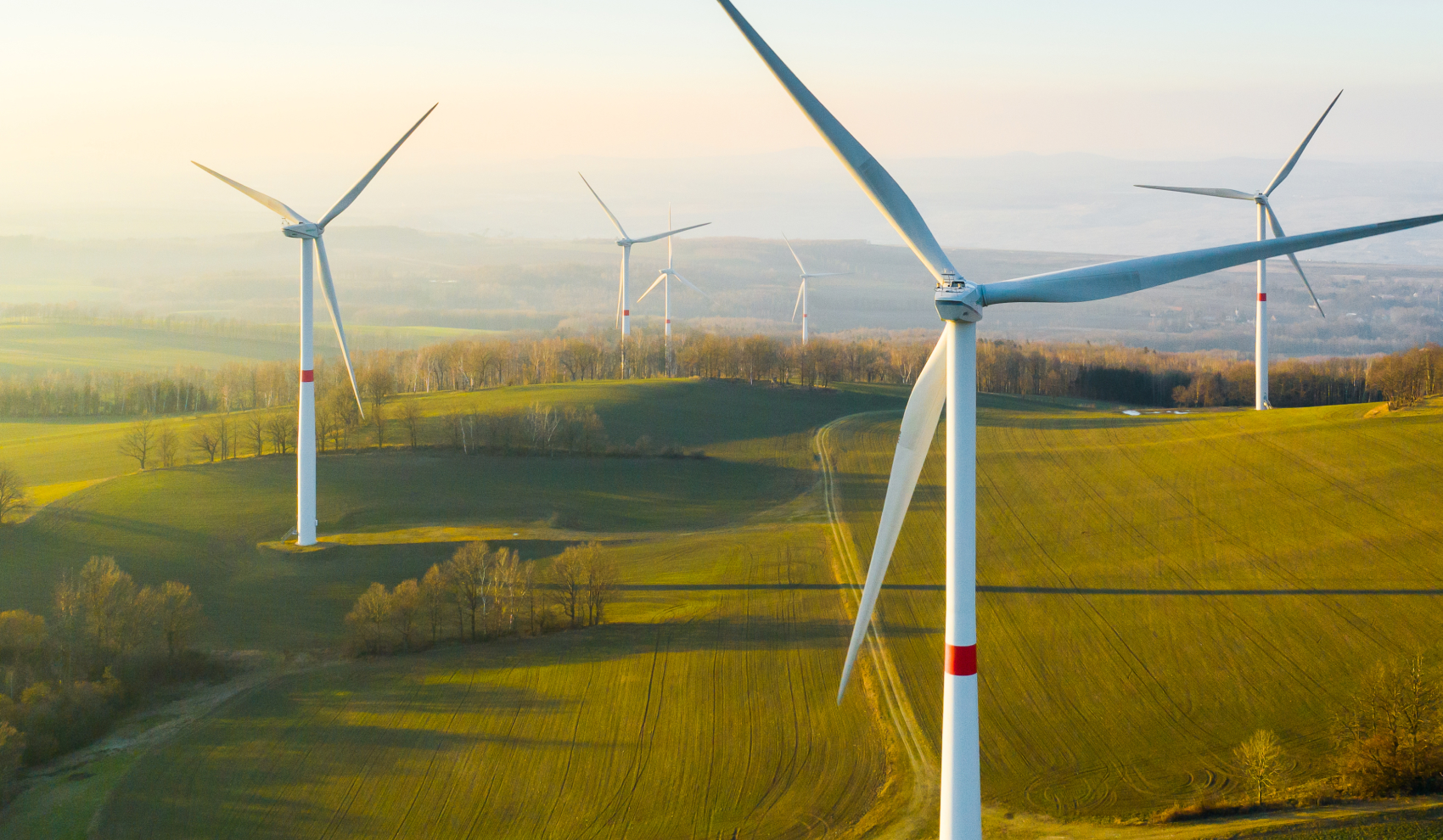Decision Intelligence for Sustainability: A Solution to Trade-offs and Increased Complexity

Sustainability is rightfully on every executive’s agenda these days. Businesses are not only acknowledging the need for action, but are also facing pressure from customers, investors, and regulators alike.
From a consumer angle, the trend toward sustainability has only accelerated in recent years as customers have begun voting with their wallets. In a survey, 39% of respondents said they made purchasing decisions that took into consideration the business’ environmental brand identity[1]. In another survey, almost a third of consumers said they considered the environmental impact of their purchases, while more than 20% wished to reduce production waste when making a purchase. And finally, in a significant trend, more than half of consumers across all generations are willing to spend more for sustainable options; within Gen-Xers, 90% indicated they would be willing to spend an extra 10% or more for sustainable products. This is a notable increased from just over 30% of Gen-Xers surveyed two years ago.[2]
ESG’s Growing Business Impact
The figures in the investment world are even more staggering. Bloomberg Intelligence has estimated that ESG-related assets under management (AUM) could reach $53 trillion by 2025 – almost a third of global AUM[3]. Meanwhile, in January 2023, for the first time more money was raised in the debt markets for climate-friendly projects than for fossil-fuel companies[4].
As a result, businesses across industries are quickly setting sustainability targets as part of their strategic plans. In the retail industry, for example, targets for carbon reduction quintupled from 2019 to 2021 alone[5]; and a study from 2022 estimated that over 80% of all companies are now publishing sustainability or ESG reports[6].
Most of the initiatives businesses have embarked on to hit their sustainability targets and KPIs entail a tectonic shift in their operations. Take General Motors for example: in early 2021, GM announced that they will have an all-electric fleet by 2035, effectively ending their production of all diesel- and gasoline-powered cars. At the same time, they stated that all their US facilities will be powered by renewable energy by 2030[7].
Later the same year, Shell announced a goal to reduce absolute emissions by 50% by 2030 (relative to 2016 levels), adding that this will mean offering their customers more low-carbon products, from renewable electricity to electric vehicle charging[8]. In 2022, Walmart announced their goal of achieving zero emissions across global operations by 2040 – a mission that would require, among other things, adapting their facilities and sourcing to be more resilient in the face of climate risk[9].
These are just a few examples of the many companies, across a range of industries, that are allocating massive spend to redefining how the business operates. These initiatives present a before and after model, and therefore leave the business vulnerable to unexpected pressures such as an inflationary landscape, geopolitical risk, and the emergence of competitive products.
The Problem of Complexity
In an SAP and Oxford Economics survey, 50% of executives said that increased complexity is proving to be an obstacle to meeting their companies’ sustainability goals.
What executives are missing in the journey to achieve their targets is the opportunity to make more sustainable choices dynamically within their current operating models.
To give a simple example from logistics: a company might change the mode of transportation from air to ocean for a single order because the promise date to the customer is far enough that shipping via sea will still fulfill on-time delivery. Transport via an ocean carrier has a much lower carbon footprint than air – the exact amount, of course, depends on several variables, but on average flights emit 500 grams of carbon dioxide/metric tons of cargo, per kilometer, whereas ships range anywhere from 10 to 40 grams per kilometer[10].
In this scenario, the decision is simple: not only is ocean shipping more sustainable, but it is also less costly – and, in this particular example, there is no customer service risk. So why don’t businesses make more of these changes?
The answer is, they do, whenever it is feasible. However, too often there are constraints in the operation. For example, in an SAP and Oxford Economics survey of the oil & gas industry, 50% of executives mentioned that increased complexity is proving to be an obstacle to meeting their sustainability goals[11].
These constraints may be structural, or they may stem from the process itself. Transportation operators may not have the ability to switch modes without first consulting inventory management teams to ensure safety stock will be maintained; or they may have to coordinate with other teams and get approvals to reallocate the capacity with third-party logistics providers. Given the complexities of each individual decision, the window of opportunity may expire before action can be taken.
Decision Intelligence Creates New Opportunities
Operators don’t have the capacity or time to sort through every opportunity that could enable a more sustainable decision; nor do they have the ability to effectively coordinate cross-functionally to make these decisions. That is where Decision Intelligence comes into the picture.
With Decision Intelligence – the ability to digitize, augment, and automate decisions across the enterprise, at scale – these opportunities can be surfaced proactively and systemically for the operator to approve. In this case, the Decision Intelligence platform does the heavy lifting: it scans all the relevant data in real time; assesses constraints in place (such as safety stock levels and vessel capacity; identifies whether there is an opportunity; and sends a recommendation to the operator. If that recommendation is approved, the machine executes it autonomously by writing back to transactional systems, data repositories, or third parties.
Furthermore, by leveraging artificial intelligence and machine learning, the platform can make accurate predictions and analyze trade-offs across functions – something hardly done today, as each function is optimizing for specific, siloed objectives.
How low can the business expect safety stock to go down when shipping via ocean versus air? What is the cost differential between modes of transportation for that given lane, and what is the likelihood of a late delivery? These are simple questions that require large amounts of data and the ability to put the pieces of the puzzle together – a task machines can do with vastly greater speed and accuracy than teams of busy people.
Sometimes, these trade-offs are simple, such as in the logistics example where both sustainability and cost were aligned. However, consider decisions where trade-offs must be made. For example, a business may be able to source products from two suppliers: one that is expected to deliver on time with a lower sourcing cost, but a higher carbon footprint, versus another that introduces service-level risks from a recent trend of quality issues, but greatly reduces carbon emissions. Should the business make the more sustainable decision?
In current models, operators typically work according to rules and guidelines. In the above example, the user would likely route the order to the vendor that will minimize service level risk and cost, because those are the KPIs that executives care about the most. The business may transition to a new operating model that also considers carbon emissions, and the weighting placed on that KPI will dictate the choice to be made.
That is, in essence, the transformation companies are making when setting net zero targets. They are effectively rewiring their sourcing, facilities, production plans, and more in ways that are aligned with improving sustainability metrics.
But a machine can do even better. With AI and machine learning, companies not only can make choices dynamically, with real-time data and the power to analyze trade-offs rapidly – they can also improve those decisions over time. Leveraging machine learning to adjust the weightings of each variable, the Decision Intelligence platform effectively optimizes the decision-making logic itself as well as the choices made for each order, shipment, or use case.
Where businesses have built processes that optimize for cost and service level today, tomorrow they will also account for sustainability metrics, updating static weightings in an operating model. Only those that leverage AI and Decision Intelligence solutions will be empowered to make the most optimal choice, capturing additional margin, customer satisfaction, and reducing emissions opportunistically.
As businesses at large embark on their own sustainability initiatives, there is an opportunity for them to use Decision Intelligence to accelerate improvements from day to day, and cut through the increased complexity in the landscape.
Learn more about how Decision Intelligence is helping companies achieve sustainability goals – watch this recording of our recent webinar, “The Convergence of Sustainability and Decision Intelligence.”
References:
[1] Sustainability magazine, “Deloitte researches consumer sustainability behaviour”
[2] Forbes, “Consumers Demand Sustainable Products and Shopping Formats”
[3] Bloomberg Professional Services, “ESG assets may hit $53 trillion by 2025, a third of global AUM”
[4] Bloomberg, “Green Lending Tops Fossil Fuel as Big Oil Gets Cash Elsewhere”
[5] Bain & Company, “Sustainability in Retail: Practical Ways to Make Progress”
[6] World Oil, “Oil and gas producers make progress on ESG”
[7] CNBC, “General Motors plans to exclusively offer electric vehicles by 2035”
[8] Shell US, “Our Climate Target”
[9] Walmart, “Climate Change”
[10] 8BillionTrees.com, “Air Freight vs. Sea Freight Carbon Footprint (The Real Numbers in 2023)”
[11] Forbes, “How The Oil And Gas Industry Is Building A Sustainable Future”






